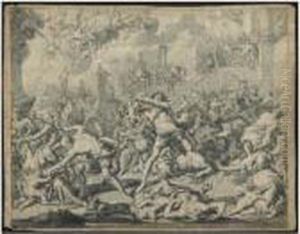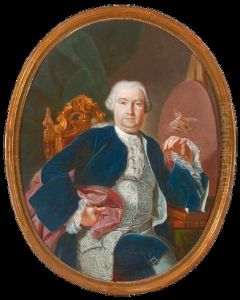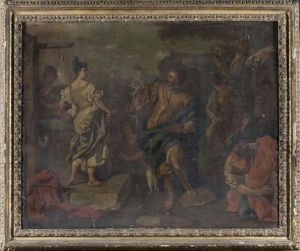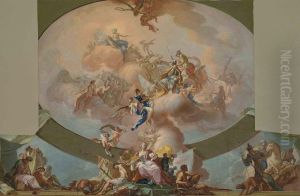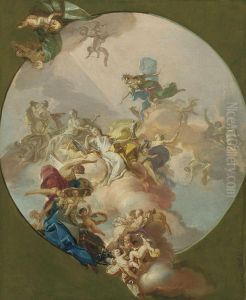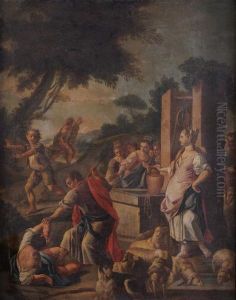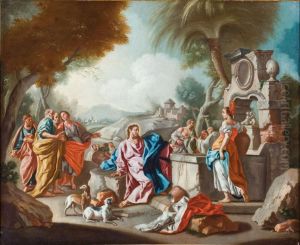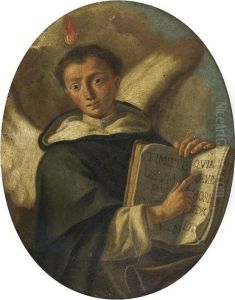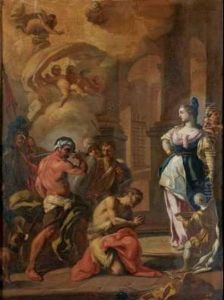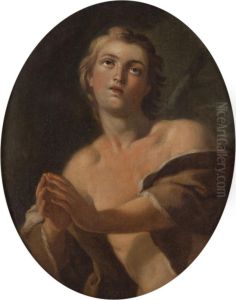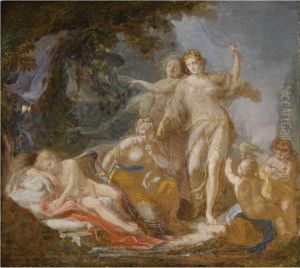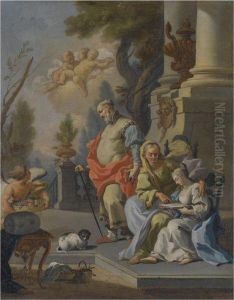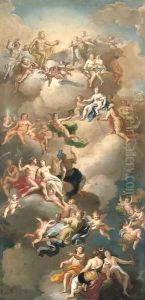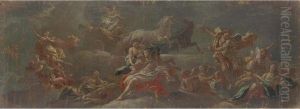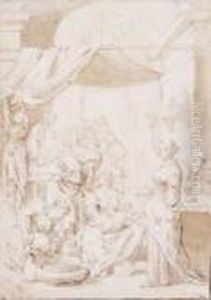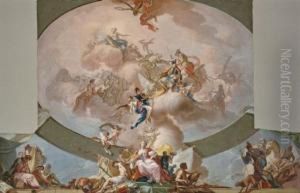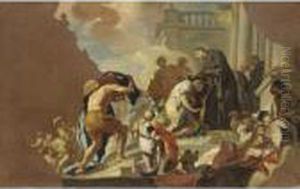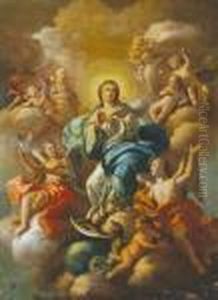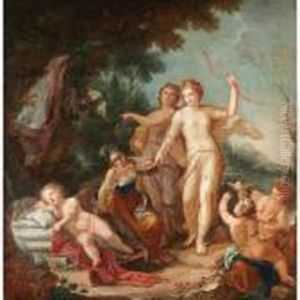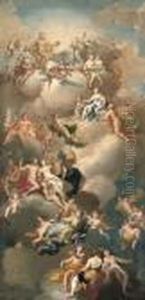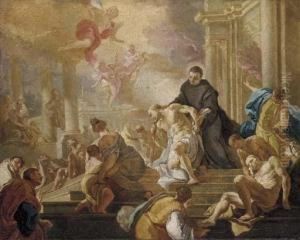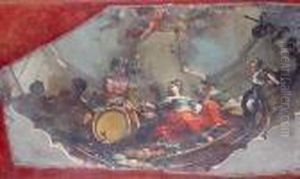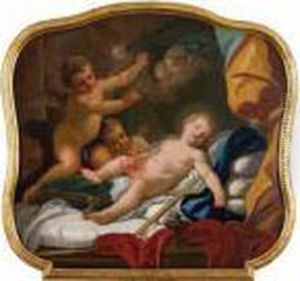Giacinto Diano Paintings
Giacinto Diano was an Italian painter from the late Baroque period, primarily known for his work in Naples during the second half of the 18th century. Born in 1731 in Porto, a village near Naples, Diano was a pupil of Francesco Solimena, one of the most significant Neapolitan painters of his time. Under Solimena's guidance, Diano honed his skills in the grand manner of the Neapolitan Baroque style, which was characterized by dramatic expressions, bold coloration, and vigorous movement.
Diano's work was largely influenced by the Neapolitan artistic environment and the Rococo style, which was becoming popular during his formative years. His oeuvre includes a variety of subjects, such as religious narratives, mythological scenes, and portraits. He was adept at fresco painting, and many of his works can be found decorating the ceilings and walls of churches and palaces in Naples and its surrounding areas.
Among his notable works are the frescoes in the Palazzo Serra di Cassano and the church of Santa Maria Donnaregina Vecchia in Naples. His paintings are distinguished by their lively compositions and the use of light to create a sense of depth and volume. Diano's ability to depict figures in motion and his attention to detail were appreciated by his contemporaries.
Despite his artistic prowess, Giacinto Diano remains a relatively lesser-known figure outside of Italy, often overshadowed by his peers and predecessors in the rich tapestry of the Italian Baroque tradition. Nevertheless, his contributions to the art of the Neapolitan school are recognized by art historians and he is celebrated for his role in the development of late Baroque and early Neoclassical styles in Southern Italy.
Giacinto Diano passed away in 1803, leaving behind a legacy as one of Naples' respected painters. His works continue to be studied and admired for their vitality and embodiment of the transitional period in Italian art.
